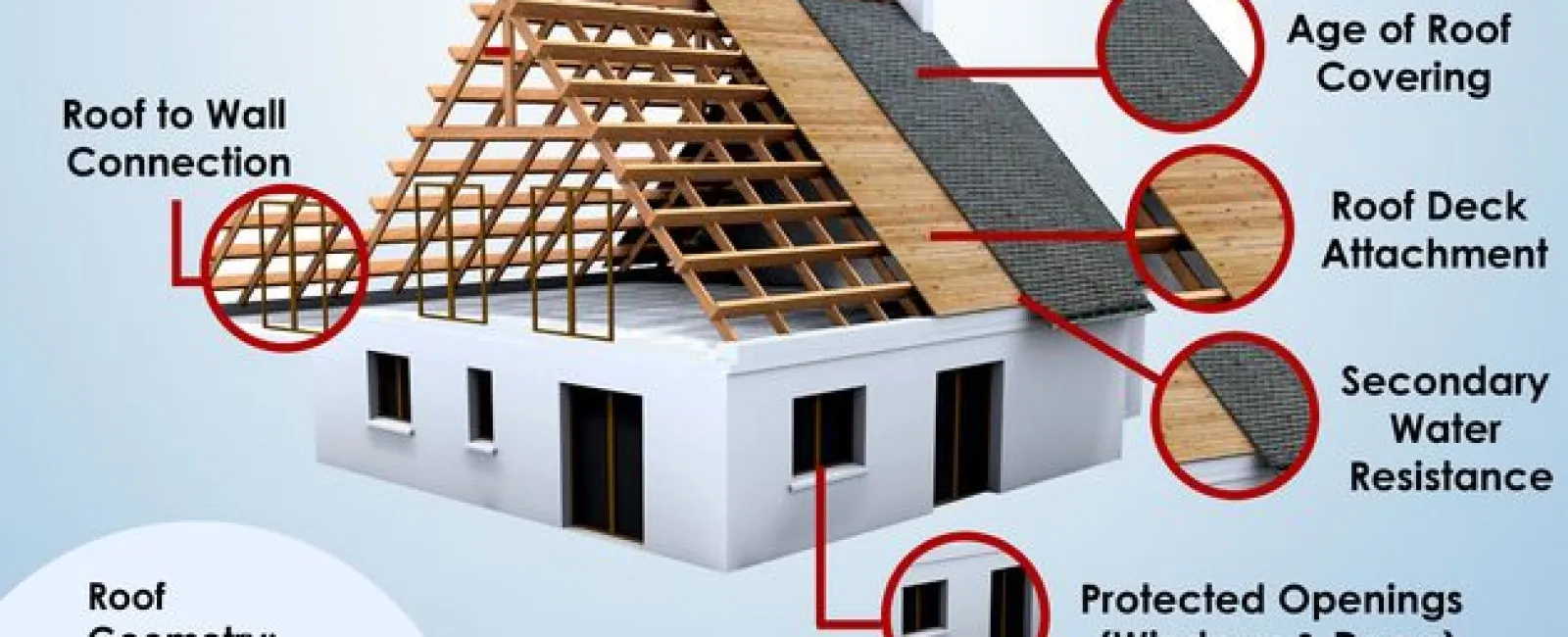A wind mitigation report is a document that provides detailed information about a residential or commercial property's resistance to wind damage. It is typically prepared by a qualified and licensed inspector who assesses the building's construction features and protective measures related to windstorms and hurricanes. The purpose of a wind mitigation report is to help homeowners and insurance companies understand the level of risk associated with a property and determine potential insurance discounts or credits for windstorm coverage.
Here are some key elements typically included in a wind mitigation report:
Roof covering: The report will detail the type of roof covering material (e.g., asphalt shingles, metal, tile) and its age. Different roof coverings have varying levels of resistance to wind and debris impact.
Roof geometry: The report will describe the shape and slope of the roof. Certain roof shapes, such as hip or gable roofs, are more resistant to wind forces compared to other designs.
Roof deck attachment: The report will assess the method and quality of attachment between the roof deck and the underlying structure. This includes examining the types of fasteners, clips, or straps used to secure the roof deck.
Roof-to-wall connections: The report will evaluate the connections between the roof and the walls of the structure. It will identify the presence and quality of hurricane straps, clips, or other reinforcement measures that enhance the structural integrity of the building.
Secondary water resistance: The report will document the presence and effectiveness of additional water-resistant barriers, such as peel-and-stick membranes or self-adhering underlayment, which help prevent water intrusion during wind-driven rain events.
Opening protection: The report will consider the presence and quality of impact-resistant windows, doors, and shutters, which can protect against wind-borne debris and prevent building envelope breaches.
Based on the findings in the wind mitigation report, insurance companies can assess the property's vulnerability to wind damage and determine if any mitigation measures are in place to reduce the risk. In some cases, homeowners may be eligible for insurance premium discounts or credits if their property exhibits features that enhance its resistance to windstorms.
It's important to note that the specific requirements and forms for wind mitigation reports may vary by location and insurance provider. Consulting with a licensed inspector or insurance agent knowledgeable about wind mitigation in your area can provide further guidance on the process and requirements.


